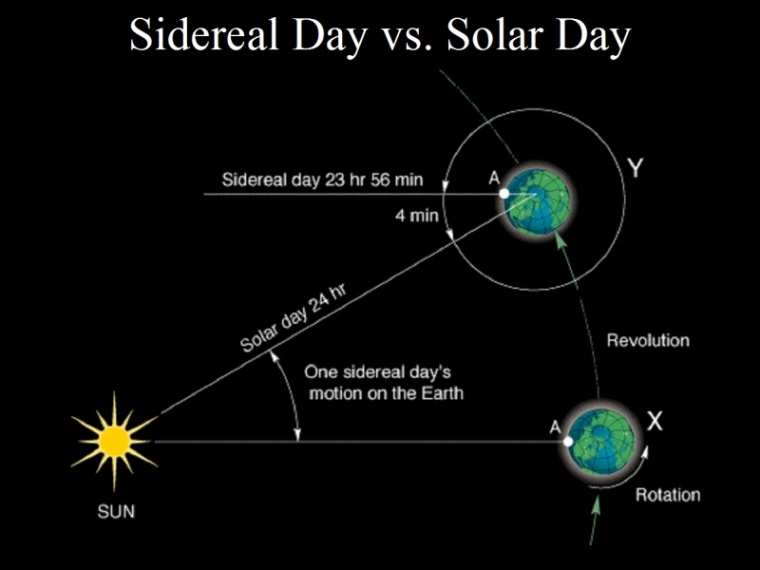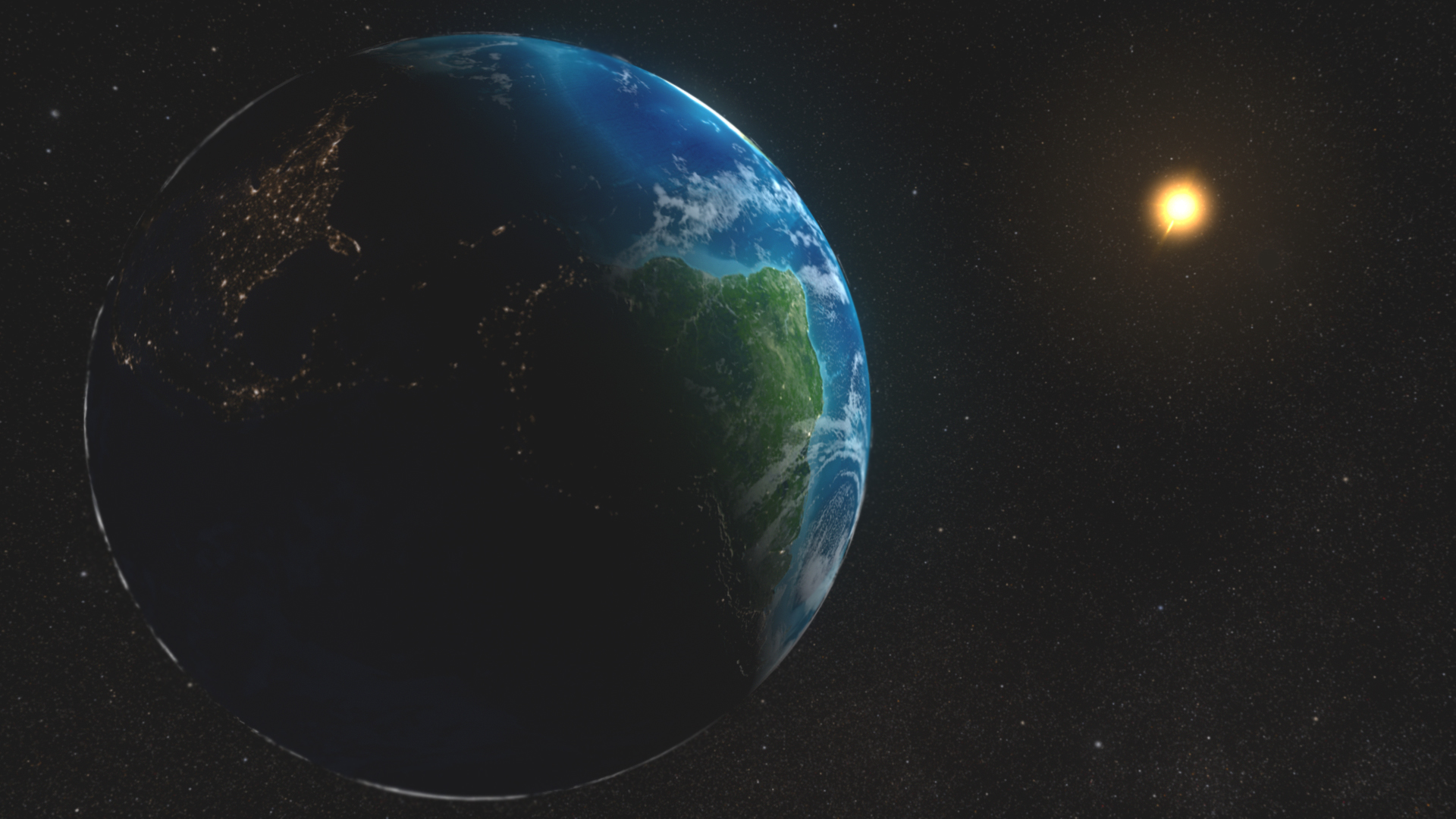When we think about a day, we usually assume it’s one complete rotation of the Earth. The Earth spins around once, and that gives us one day and one night. But what we call a day is not exactly one rotation of the earth.
First, let’s assume that one day means one rotation of the earth. Imagine you mark a spot on the Earth and say, “This spot faces the Sun right now.” Then after one full spin, that same spot would face the Sun again, and a day would be over. Easy and simple.
But here’s where it gets tricky. The Earth isn’t just spinning on its axis; it’s also moving around the Sun. This means that by the time the Earth has done one full spin, it’s also moved a bit along its orbit. Because of this movement, after one complete rotation, that marked spot isn’t exactly facing the Sun anymore.

So, if we use one rotation as a day, then day after day, that marked spot would keep moving away from facing the Sun. And by the time the Earth reaches the opposite side of the Sun in its orbit, that spot would be totally hidden from the Sun and it would be midnight in that spot. So, eventually, what we call “noon” would happen at midnight, and “midnight” would happen at noon.

But in real life, our day and night times stay pretty much the same throughout the year. This consistency is because we don’t just use the Earth’s rotation to define a day. Instead, we use what’s called a solar day. A solar day is the time it takes for the Sun to return to the same position in the sky, from one noon to the next.
As the Earth moves in its orbit, one rotation is not enough to bring the Sun to the same position in the sky. The Earth has to spin a little bit more for that spot to face the Sun again. This extra bit of spinning is why our days are about 24 hours long. One rotation of the Earth actually takes only 23 hours, 56 minutes, and 4 seconds. That extra spin to bring the Sun into position takes 3 minutes and 56 seconds making a day 24 hours long.
This 24-hour-long solar day is what we use in our daily lives so that our clocks stay in sync with the Sun. By defining a day based on the Sun’s position, we ensure that our clocks match up with the natural rhythm of daylight and darkness. The time taken by Earth to complete one full rotation on its own axis without considering the Sun is called a sidereal day. We don’t use sidereal days to keep time.
So, when we were told one day means one rotation of the Earth, it was one rotation with respect to the Sun’s position, not with respect to the Earth’s axis.
Note that this has nothing to do with leap years. That’s a totally different concept.
Reference Links:
https://en.wikipedia.org/wiki/Sidereal_time
https://planetpailly.com/2023/04/22/mercury-a-to-z-solar-vs-sidereal-days/
https://lco.global/spacebook/sky/sidereal-time
